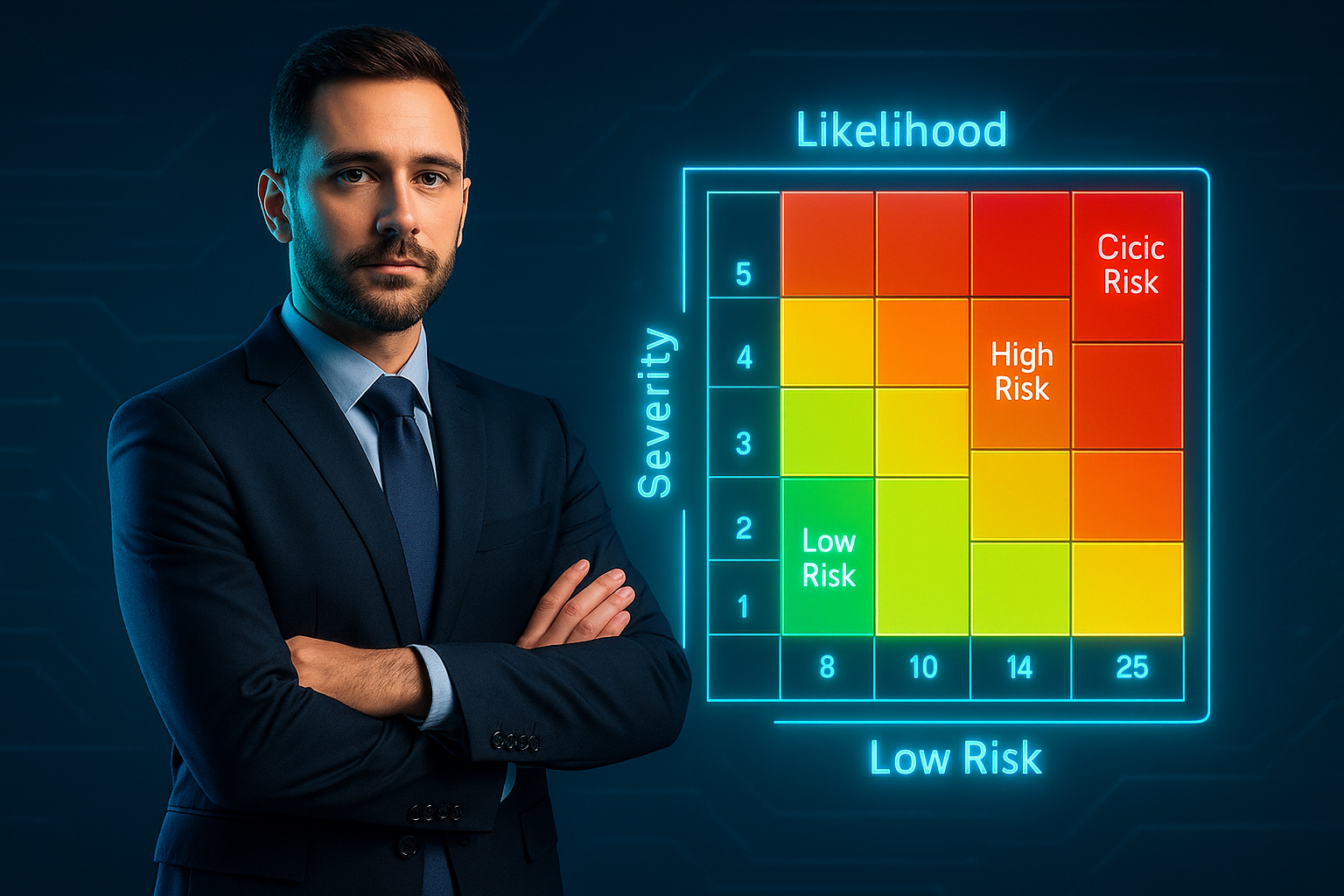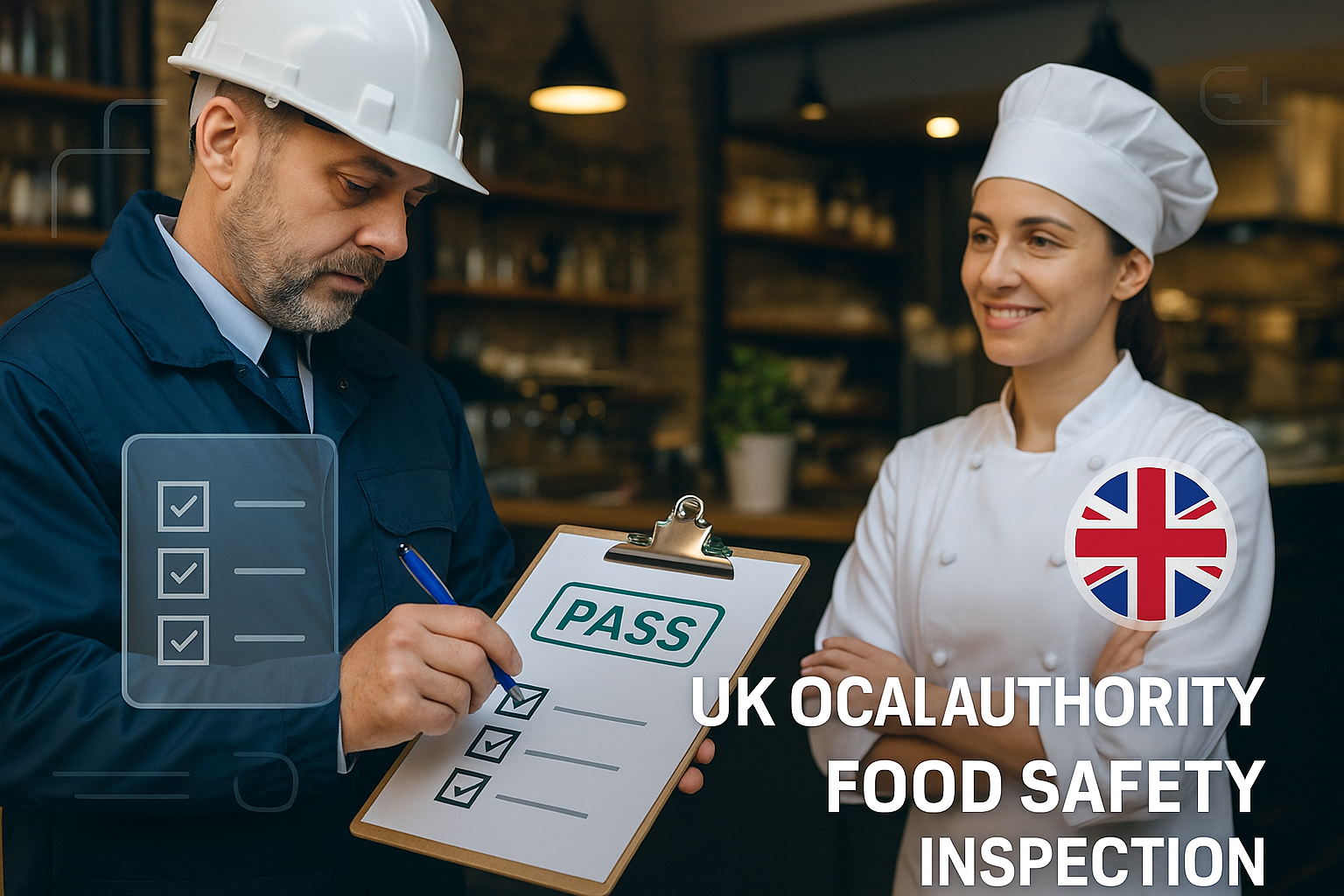Your cart is currently empty!
Author: The Brown Safety Man
-

Implementing ISO 45001 in UAE Free Zones : Step‑by‑Step Best Practices
Navigating the complexities of occupational health and safety (OH&S) in UAE Free Zones demands a structured, risk-based approach that aligns global standards with local regulations. Whether you operate in Jebel Ali Free Zone (JAFZA), Dubai Multi Commodities Centre (DMCC), or Ras Al Khaimah Economic Zone (RAKEZ), ISO 45001 certification not only enhances workplace safety but also reinforces your credibility in highly competitive sectors like oil & gas, logistics, manufacturing, and trade.
In this comprehensive guide, we delve into every phase of ISO 45001 implementation—from initial gap analysis to certification audits—adding region-specific insights, multilingual strategies, and practical tools to streamline your OH&S journey. By embedding these best practices, you’ll reduce incidents, lower insurance premiums, and unlock new business opportunities across the Middle East and beyond.
Throughout the article, you’ll find detailed checklists, real-world examples, and downloadable templates designed for UAE Free Zone environments. We also highlight how partnering with an experienced OH&S consultancy can accelerate your timeline and ensure compliance with local directives.
Ready to elevate your safety management system? Read on for a step-by-step roadmap that transforms ISO 45001 from a regulatory checkbox into a competitive advantage. If you need tailored support at any stage, contact us for expert guidance, tools, and services.
Why ISO 45001 Matters in UAE Free Zones
- Regulatory Alignment: UAE Free Zones (e.g., JAFZA, DMCC, DAFZA, RAKEZ) enforce stringent OH&S frameworks to maintain operator licenses. ISO 45001 bridges global best practices with these local mandates, mitigating the risk of fines, shutdowns, or reputational damage.
- Systematic Risk Reduction: With ISO 45001’s structured risk assessment process, you can proactively identify hazards—from hot work to chemical handling—and implement targeted controls, significantly reducing incident rates and operational downtime.
- Competitive Differentiator: Certification demonstrates commitment to employee welfare and risk management, making your company a preferred partner for international clients, investors, and regulatory bodies.
🛠️ Step‑by‑Step Implementation Roadmap
1. Conduct an Initial Gap Analysis
- Legal & Regulatory Review
- Applicable Laws: List UAE-wide statutes (e.g., Federal Decree-Law No. 33/2021) and Free Zone regulations (e.g., JAFZA Safety Regulations, DMCC Compliance Manual).
- Clause Mapping Matrix: Align each ISO 45001 clause with relevant local directives to pinpoint compliance gaps.
- Current State Assessment
- Process Inventory: Catalog existing OH&S elements—incident logs, training records, equipment inspections, PTW forms.
- Gap Identification & Prioritization: Assign risk scores and compliance levels to missing or partial processes, focusing on those with highest safety impact.
Pro Tip: Accelerate analysis with our pre-configured Gap Analysis Template.
Contact us for free access and expert review.2. Secure Leadership Commitment
- Executive Briefing
- Present incident trends, risk-cost analysis, and case studies showing ROI of ISO 45001 certification.
- Facilitate a workshop to finalize your OH&S Policy, ensuring it reflects Free Zone-specific requirements and corporate values.
- Roles & Responsibilities
- Project Champion: Senior HSE or QHSE Manager to oversee implementation.
- Functional Owners: Define clear accountability for hazard identification, incident response, training, and audit activities.
3. Develop Your OH&S Management System (OHSMS)
3.1 Planning
- Risk & Opportunity Register
- Conduct cross-functional hazard identification sessions.
- Use a 1–5 likelihood-severity risk matrix to quantify each hazard.
- Document improvement opportunities (automation, ergonomic tools) alongside risks.
- Objectives & KPIs
- Set SMART goals (e.g., “Reduce lost-time injuries by 25% by Q1 2026”).
- Track leading indicators (training completion) and lagging indicators (incident frequency rate) via a dynamic dashboard.
Need tailored e‑learning content?
Contact us to develop multilingual, interactive training modules.3.2 Support
- Competence & Training
- Perform a Training Needs Analysis for all roles.
- Develop materials in English, Arabic, Hindi/Urdu; include visual aids for high-impact retention.
- Monitor completion and assessment results in an LMS or compliance tracker.
- Communication Protocols
- Establish multi-channel updates: email alerts, WhatsApp groups, digital signage.
- Schedule regular toolbox talks and quarterly safety forums with multilingual translation.
4. Operational Control & Documentation
- Process Mapping & Document Control
- Create detailed flowcharts for high-risk tasks (confined space, hot work).
- Implement a document control system with versioning and approval workflows.
- Permit‑to‑Work (PTW) System
- Evaluate digital PTW platforms; consider offline-capable apps for remote sites.
- Define approval, execution, and closure procedures, ensuring all stakeholders sign off.
- Emergency Preparedness
- Develop an Emergency Response Plan covering fire, spill, and medical incidents.
- Conduct quarterly drills, capture performance metrics, and update plans accordingly.
5. Performance Evaluation
- Internal Audits
- Rotate audit teams for impartial reviews.
- Document non-conformities, severity levels, and propose corrective actions in audit reports.
- Incident Investigation
- Apply 5 Whys or Fishbone Analysis for root-cause detection.
- Record actions in a CAPA register, assign owners, and verify effectiveness.
- Management Review
- Conduct biannual reviews covering audit outcomes, KPI trends, resource gaps, and stakeholder feedback.
- Document minutes, decisions, and accountability for follow-up actions.
6. Continual Improvement & Certification
- Corrective Action Plans (CAPA)
- Maintain a live CAPA register with progress tracking and closure verification.
- Pre‑Certification Audit
- Commission a mock audit to validate documentation and processes.
- Close minor findings before the formal assessment.
- Certification Audit
- Stage 1: Registrar reviews your OHSMS documentation remotely.
- Stage 2: On-site audit assesses implementation, interviews staff, and inspects facilities.
Ready to certify?
Contact us for end-to-end Stage 1 & 2 audit support.
Common Implementation Challenges & Solutions
Challenge Solution Diverse languages onsite Translate SOPs and training materials; use pictograms and video. Connectivity limitations Deploy offline-capable compliance apps for PTW and reporting. Resistance to change Launch a safety culture campaign highlighting employee benefits.
Partner with OH&S Experts
While this guide delivers a robust blueprint, our consultancy empowers you with hands-on expertise, region-specific insights, and proven tools:
- Turnkey ISO 45001 implementation from gap analysis to certification.
- Custom, multilingual training and workshops tailored to your sector.
- Digital templates and compliance platforms to streamline OHSMS.
Get started today:
Contact us for a free project scoping call and bespoke proposal.
Conclusion
Adopting ISO 45001 in UAE Free Zones transforms your safety management—from a regulatory obligation into a strategic asset that attracts clients, reduces risks, and elevates brand reputation. By following this detailed roadmap and leveraging specialized support, you’ll achieve certification faster and sustain continual improvement.
Don’t wait—secure your OH&S excellence now.
Contact us to begin your ISO 45001 journey.
-

UK Health and Safety at Work Act Guide for SMEs
Complying with the Health and Safety at Work etc. Act 1974 (HSW Act) is non-negotiable for UK SMEs. Beyond ticking boxes, it’s about protecting lives, avoiding costly fines, and safeguarding your reputation. This comprehensive Health and Safety at Work Act guide for SMEs demystifies your legal obligations, explains key concepts in depth with real-life examples, and equips you with templates and best practices to build an audit-ready SME safety management system.
1. What Is the Health and Safety at Work Act UK?
The HSW Act is the foundation of UK workplace safety law.
-
Who it covers: Every employer, the self-employed, and employees across all sectors—from hair salons to manufacturing plants.
-
General duty of care: You must protect workers, visitors, and the public “so far as is reasonably practicable.”
-
HSE enforcement: Inspectors can serve improvement or prohibition notices, prosecute serious breaches, and publish enforcement outcomes.
Real-Life Example: A local bakery was fined £30,000 after a customer slipped on an unmarked wet floor. No “wet floor” sign was displayed, and the cleaning records were missing—clear HSW Act failures.
2. Employer Duties Under the HSW Act in the UK
2.1 Provide a Safe Workplace
Meaning: You must identify hazards in your premises, plant, and work systems—and eliminate them if possible, or control them to a tolerable level.
-
“Reasonably Practicable” Explained: Balances risk against the cost, time, and effort to mitigate it.
-
Practical Steps:
-
Walkthrough Audits: Quarterly site tours with a checklist.
-
Slip/Trip Controls: In a distribution centre, loose cables were causing trips; installing cable covers and marking aisles reduced incidents by 80%.
-
Fire Safety: A furniture workshop failed an audit because exit routes were blocked by stored stock—simply relocating pallets resolved the breach.
-
2.2 Safe Use of Plant & Machinery
Meaning: All equipment must be maintained, guarded, and operated safely.
-
Inspection Regime:
-
Operator Checks (Daily): E.g., in a print shop, operators check guard interlocks and emergency stops before every shift.
-
Thorough Inspections (Monthly/Annual): A café’s coffee grinder hadn’t been serviced in two years—leading to motor failure and a near-miss; a service contract fixed the gap.
-
-
Guarding & LOTO Procedures:
-
Guarding: Exposed blades on a woodworking lathe caused a severed finger. Installing fixed and interlocked guards eliminated the risk.
-
Lockout/Tagout (LOTO): A maintenance engineer electrocuted in a factory because power isolation wasn’t documented. A simple written LOTO permit and tag system prevents recurrence.
-
2.3 Information, Instruction & Training
Meaning: Employees must receive readable safety information and relevant training.
-
Training Types:
-
Site Induction: On Day 1 at a tech startup, staff didn’t know emergency exits; a 15-minute induction fixed this.
-
Task-Specific: In a brewery, staff spill bleach—requiring COSHH training; holding small group sessions cut spill-related illnesses by 60%.
-
-
Recordkeeping:
-
Digital Logs: A packaging company switched to e-signatures for toolbox talks—improving attendance tracking and audit readiness.
-
3. Employee Duties Under the Health and Safety at Work Act UK
Meaning: Safety is a two-way street.
-
Take Reasonable Care: Always wear provided PPE (e.g., steel-toe boots in warehouses).
-
Co-operate: Report hazards—when a receptionist flagged flickering lights in an office, an electrical fault was discovered and fixed before injury.
-
Use Equipment Properly: Never bypass guards—one painter lost use of two fingers by disabling a mixer’s guard.
4. How to Perform UK Risk Assessments (HSW Act 1974)
A suitable and sufficient risk assessment must be documented for each significant activity.
Five-Step Process
-
Identify Hazards: List anything that can cause harm—chemical, physical, ergonomic.
-
Evaluate Risks: Assign a severity (1 = minor, 5 = fatal) and likelihood (1 = rare, 5 = certain). Multiply for a risk score.
-
Implement Controls: Follow the hierarchy: eliminate → substitute → engineer → admin → PPE.
-
Record Findings: Use a clear risk register.
-
Review & Revise: After incidents, process changes, or annually.
Real-Life Register Example
Hazard Score (S×L) Controls Owner Manual lifting of 20 kg boxes 6 (3×2) Trolleys; manual handling training Ops Supervisor Wet floor in production line 8 (4×2) Anti-slip mats; spill kits; daily inspection Facilities Mgr Acid spill during cleaning 10 (5×2) COSHH assessment; acid-resistant gloves & goggles HSE Advisor Tip: Anything scoring ≥8 demands immediate action—communicate these high-risk items at your next safety meeting.
5. Document Control & Recordkeeping for UK SMEs
Proper document control ensures staff always follow the latest procedures.
-
What to Store:
-
Risk assessments and reviews
-
Training attendance and materials
-
Inspection, maintenance, and LOTO logs
-
Incident and near-miss reports
-
-
Best Practices:
-
Digital DMS: A landscaping firm moved to a cloud DMS with version control—eliminating confusion over which form to use.
-
Footer Details: Include version number and “Next Review Date” on every page.
-
Backups: Schedule nightly backups to secure off-site storage.
-
In-Post Policy Snippet
Health & Safety Policy
“We commit to ensuring a safe workplace for employees, contractors, and visitors. Senior Management is responsible for overall compliance; the appointed HSE Advisor oversees implementation. This policy will be reviewed annually or following significant changes.”
6. Enforcement & Penalties Under the HSW Act
HSE enforcement can be severe:
-
Improvement Notices: E.g., a gym received a notice to fit machine guards on weight machines by a set date.
-
Prohibition Notices: A garage had to cease welding operations after a serious fire risk was identified.
-
Prosecutions: A small fabrication workshop was fined £100,000 plus costs after an arm amputation—failure to guard moving parts.
-
Publication Orders: The fine was published online, damaging their ability to win new contracts.
7. Practical Toolkit for HSW Act Compliance
-
Draft a Clear H&S Policy
-
Adapt the snippet above—add sections on lone working and manual handling.
-
-
Conduct & Document Risk Assessments
-
Hold multi-department workshops; capture findings in a central register.
-
-
Implement a Review Schedule
-
Automate reminders for quarterly audits and annual policy reviews.
-
-
Train & Document
-
Use e-learning for refresher training; maintain digital attendance records.
-
-
Audit & Improve
-
Assign an HSE Champion to perform unannounced site checks and document findings.
-
8. FAQs About the Health and Safety at Work Act UK
Q: What qualifies as “reasonably practicable”?
A: It’s a risk/cost balance. If the cost of mitigation is grossly disproportionate to the risk, you may deem it impracticable—but document your rationale.Q: How often must risk assessments be reviewed?
A: At least annually, after any significant change, or following an incident/near-miss.Q: Are digital records acceptable?
A: Yes—provided they’re backed up, access-controlled, and tracked via audit trails.
9. How We Can Help
Achieving—and maintaining—HSW Act compliance is resource intensive. Our Remote HSE Department service gives you:
-
Custom Documentation: Site-specific manuals, policies, and risk-register templates—never generic.
-
Continuous Management: Version control, scheduled reviews, and instant updates for regulatory changes.
-
Full HSE Support: End-to-end risk assessments, COSHH packs, incident investigations, training programmes, and management reporting.
-
Scalable Expertise: Access UK-based HSE specialists on demand—no new hires or overhead.
Contact Us to discuss your bespoke HSW Act compliance package or engage us as your remote HSE team.
Let’s build—and maintain—your perfect, audit-proof safety management system together.
-
-

Ultimate Guide to Conducting a Workplace Risk Assessment
Welcome to the definitive resource for workplace risk assessment, designed to empower safety managers, HR leaders, and business owners with the tools and insights needed to transform risk management from a compliance obligation into a competitive advantage. In today’s fast-paced industrial and commercial environments, proactive hazard identification and mitigation are critical for reducing incidents, minimizing downtime, and protecting both people and profits.
In this guide, you will discover:
- Actionable step-by-step processes using our customizable risk assessment checklist and risk assessment template to ensure no hazard is overlooked.
- Data-driven strategies for quantifying risk with a color-coded risk matrix, scoring methodology, and performance metrics that drive measurable safety improvements.
- Best practices for OSHA & HSE compliance and international standards (ISO 31000, ISO 45001), including how to integrate requirements into your existing management systems.
- Advanced techniques—from IoT-enabled hazard detection to predictive analytics—that elevate your program and future-proof your operations.
By the end of this guide, you’ll have a comprehensive risk register framework, practical engineering and administrative control recommendations, and a blueprint for building a dynamic, continuous improvement process—backed by real-world case studies demonstrating substantial ROI. Let’s get started on creating a safer, more resilient workplace.
What Is a Workplace Risk Assessment?
A workplace risk assessment is a structured risk management process for:
- Identifying hazards across operations, equipment, and workflows.
- Assessing how likely each hazard is to cause harm and the severity of potential injuries.
- Implementing control measures prioritized by impact and cost-effectiveness.
- Documenting every decision to provide an audit trail and support continuous improvement.
This proactive approach fosters a safety-first culture, turning compliance into a competitive advantage.
Keywords: workplace risk assessment, risk management process, hazard identification checklist
Business Benefits & ROI of Risk Assessments
Investing in risk assessments delivers measurable returns:
- Reduced Incident Costs: Companies can save $3–$6 for every $1 spent on safety programs by preventing injuries and downtime.
- Lower Insurance Premiums: Demonstrating an effective safety program can earn you discounts of 5–15% on workers’ compensation rates.
- Operational Continuity: Fewer accidents mean less disruption—maintaining productivity and meeting project deadlines.
- Enhanced Reputation: Clients and investors prioritize partners with robust safety records, strengthening your brand and winning bids.
Keywords: safety ROI, incident cost savings, insurance premium reduction
Regulatory Landscape & Industry Standards
Understanding requirements in your jurisdiction is critical:
Region Legislation/Standard Key Focus UK Health and Safety at Work etc. Act 1974; ISO 31000 Systematic risk management, employer duties US OSHA Act; ANSI Z10 General industry standards, management systems EU Framework Directive 89/391/EEC; ISO 45001 Worker involvement, continual improvement Action Point: Map local laws to global standards (ISO) to create a unified risk framework.
Keywords: OSHA compliance, ISO 45001, HSE regulations
5-Step Risk Assessment Process Explained
Step 1: Identify Hazards with a Risk Assessment Checklist
Objective: Compile a complete inventory of potential hazards across physical, chemical, biological, ergonomic, and psychosocial domains.
- Site Audits: Perform day and night inspections; use digital apps to log photos, GPS coordinates, and time stamps.
- Task Analysis Workshops: Engage cross-functional teams to map workflows, pinpointing high-risk touchpoints.
- Data Analysis: Leverage historical incident, near-miss, and insurance claim data to reveal hidden patterns.
Step 2: Determine Who’s at Risk & Potential Injuries
Objective: Clearly define affected populations and characterize injury types for targeted controls.
- Stakeholder Mapping: List all individuals—employees, contractors, visitors, maintenance technicians.
- Injury Taxonomy: Categorize hazards by likely injuries: lacerations, MSDs, respiratory issues, hearing loss, psychological stress.
Step 3: Evaluate Risk Severity & Likelihood
Objective: Assign quantifiable scores to prioritize control measures effectively.
- 5×5 Risk Matrix: Define clear scoring criteria for each severity and likelihood category, ensuring consistency across teams.
- Weighted Scoring: Apply weights for critical processes (e.g., production line vs. office area) to focus on business-critical zones.
Risk Score Formula:
Risk Score = Severity Rating × Likelihood Rating
• Severity and Likelihood are each rated 1 (lowest) to 5 (highest).
• Scores range from 1–25, grouped into risk bands.Color-Coded Risk Matrix
Risk Bands Explanation:
- Low Risk (1–7): Green — acceptable, monitor periodically.
- Medium Risk (8–14): Yellow — plan corrective actions within 30–60 days.
- High Risk (15–19): Orange — implement controls immediately.
- Critical Risk (20–25): Red — stop operation and apply urgent mitigation.
Step 4: Implement Controls Using the Hierarchy of Controls
Objective: Eliminate or reduce risks in order of effectiveness.
- Elimination/Substitution: Remove the hazard or replace it with a less hazardous option—e.g., switch to water-based adhesives.
- Engineering Controls: Install machine guards, ventilation hoods, or noise dampening barriers.
- Administrative Controls: Develop SOPs, conduct regular training sessions, and schedule job rotations to minimize exposure.
- PPE: Issue certified gloves, respirators, and eyewear; ensure fit-testing and compliance monitoring.
Step 5: Monitor, Review & Update Your Risk Register
Objective: Maintain momentum and adapt to evolving risks.
- Automated Alerts: Schedule periodic reviews (monthly, quarterly) based on control criticality.
- KPI Tracking: Monitor metrics like Incident Frequency Rate (IFR), average time to close risk items, and employee engagement scores.
- Continuous Feedback Loop: Solicit suggestions via safety committees and anonymous reporting channels.
Common Industry-Specific Hazards & Mitigation
Industry Hazard Category Specific Risks Top Mitigations Manufacturing Mechanical, Noise Machine entanglement, hearing loss Guarding systems, hearing conservation Construction Falls, Struck-by Heights, falling debris Fall arrest harness, debris netting Healthcare Biological, Sharps Pathogen exposure, needle-stick injuries Isolation rooms, sharps disposal programs Office Ergonomic, IAQ Repetitive strain, poor air filtration Adjustable workstations, HVAC upgrades Warehousing Material Handling Manual lifting, forklift collisions Lift-assist devices, aisle marking systems Keywords: industry-specific hazards, fall arrest, hearing conservation program
Tools, Templates & Software Integrations
- Risk Assessment Template (Excel/Word): Pre-built tables with dropdowns for scoring and status tracking. Contact us if you want one build for you.
- Digital Inspection Apps: Make safety digital with easy to use integrated apps for inspection to keep records alive and compliance 100%. Contact us if you want one build for you.
- Risk Management Systems: Have an onsite/offsite health and safety management system to keep on top of compliance. Contact us if you want one build for you.
Performance Metrics & KPIs
Track these to measure program effectiveness:
Metric Calculation Target Benchmark Incident Frequency Rate (IFR) (Number of incidents × 200,000) ÷ Hours worked <2.0 across industries Near-Miss Reporting Rate Near-misses reported ÷ total work hours Increasing trend month-over-month Control Closure Time Average days to implement controls <30 days Training Completion Rate Employees trained ÷ total assigned 100% Contact us if you want a KPI system build for you
Case Study: Company X’s Risk Reduction Success
Background: A 120-employee electrical manufacturer faced a surge in hand and back injuries.
- Hazard Identification: Used wearable sensors to detect repetitive motions.
- Risk Evaluation: Prioritized manual handling tasks with the highest RSI rates.
- Controls: Installed lift-assist arms (engineering) and introduced micro-break protocols (administrative).
- Review: Monthly dashboards showed a 50% drop in injury claims.
Result: Over 6 months, total incident costs decreased by $150,000, and OSHA recordable injuries fell by 60%.
FAQ: Risk Assessment Best Practices
Q1: How often should I update my risk assessment?
A: At a minimum, annually—or immediately after any significant change such as new equipment, processes, or after a reportable incident.Q2: Can small businesses conduct risk assessments without dedicated software?
A: Yes—start with our free Excel template and hazard checklist, then scale to digital platforms as your program matures.Q3: What’s the most common mistake in risk assessments?
A: Relying solely on PPE. Always prioritize higher-level controls (elimination, substitution, engineering) before PPE.Q4: How do I engage employees in the risk assessment process?
A: Create safety committees, hold regular toolbox talks, and incentivize near-miss reporting with recognition programs.
Key Takeaways & Next Steps
- Contact us if you need a simple ready-to-use template to get your risk assessment project kick-started
- Implement the 5-step risk assessment process with rigorous documentation.
- Leverage custom build Health and Safety management system from Safe-comply for automation and analytics.
- Monitor key safety KPIs and foster employee involvement for a thriving safety culture.
Ready to elevate your safety program?
Contact Us for a free consultation -

10 Common Safety Documentation Mistakes (and How to Fix Them)
Effective, accurate documentation is the backbone of any robust safety program. Yet even experienced teams fall into the same traps—leaving procedures unreadable, incomplete, or non-compliant. In this post, we’ll walk through the 10 most common safety documentation mistakes, show you quick “before vs. after” fixes for each, and explain how to make your docs clear, concise, and audit-ready.
- Mistake 1: Unclear Responsibilities
- Mistake 2: Overly Long Procedures
- Mistake 3: Missing Revision History
- Mistake 4: Inconsistent Terminology
- Mistake 5: No Cross-References
- Mistake 6: Poorly Formatted Tables
- Mistake 7: Lack of Version Control
- Mistake 8: Incomplete Risk Descriptions
- Mistake 9: Generic Templates
- Mistake 10: No Review Schedule
Mistake 1: Unclear Responsibilities
Why It’s a Problem:
When tasks aren’t assigned explicitly, critical safety activities fall through the cracks. If no one “owns” an inspection, it may never happen—or the wrong person does it. That gap can lead to missed maintenance, unaddressed hazards, and ultimately injuries or regulatory fines.Potential Effects:
- Missed monthly checks on fire extinguishers or emergency lighting
- Confusion in an emergency—who shuts down equipment?
- Blame-shifting after an incident, undermining corrective action
Before (flawed):
The inspection of fire extinguishers shall be performed monthly, and records are to be kept.
After (fixed):
- Safety Officer: Perform monthly fire extinguisher inspections.
- Facilities Manager: Upload inspection records to the Compliance folder.
Mistake 2: Overly Long Procedures
Why It’s a Problem:
Walls of text lose readers’ attention. If your permit-to-work process is buried in a 300-word paragraph, workers will skim—or skip entirely—missing critical steps. In a worst-case scenario, you could see un-de-energized equipment, incorrect lockout/tagout, or other life-threatening errors.Potential Effects:
- Steps skipped or performed out of order
- Increased near-miss incidents
- Delays or stoppages when crews hunt for the next step
Before (flawed):
To lock out the conveyor, first isolate power, then tag the isolation point, then bleed residual pressure… (continues for 300 words)
After (fixed):
- Isolate main power at panel (see Figure 1).
- Tag control switch with “DO NOT OPERATE.”
- Bleed residual pressure via valve V-02.
- Verify zero energy with a voltage tester.
Mistake 3: Missing Revision History
Why It’s a Problem:
Without a clear log of changes, teams can’t tell which version is current. Auditors will flag your doc as non-compliant, and front-line staff may follow obsolete procedures—creating regulatory liability and safety gaps.Potential Effects:
- Outdated PPE requirements still in use
- Conflicting procedures circulating among teams
- Audit failures, fines, and corrective-action orders
Before (flawed):
[No revision table on document]
After (fixed):
Revision Date Author Changes 1.0 2024-02-15 J. Smith Initial release 1.1 2024-07-01 A. Khan Updated PPE requirement Mistake 4: Inconsistent Terminology
Why It’s a Problem:
Swapping between “JSA,” “Job Safety Analysis,” and “Task Risk Assessment” confuses everyone. Workers may think they need three separate forms—wasting time—and auditors will question your document control.Potential Effects:
- Duplicate or incomplete forms filed
- Training gaps because staff can’t find the right document
- Audit non-conformance for inconsistent documentation
Before (flawed):
Complete the JSA before each shift. A Job Safety Analysis form must be filed.
After (fixed):
Use Job Safety Analysis (JSA) consistently:- Each shift, complete the JSA form.
- Store all JSAs in the JSA Records folder.
Mistake 5: No Cross-References
Why It’s a Problem:
If your procedure says “see section 4.2” without an anchor or link, readers waste time scrolling—and may miss critical controls. That friction discourages use of the full procedure, raising the chance of unsafe shortcuts.Potential Effects:
- Workers skip to familiar sections, ignoring new updates
- Increased human error from incomplete information
- Lowered compliance during surprise inspections
Before (flawed):
Refer to section 4.2
After (fixed):
Refer to Section 4.2 – Personal Protective Equipment Requirements.Mistake 6: Poorly Formatted Tables
Why It’s a Problem:
Tables without clear headers or with merged cells collapse when printed or exported to PDF. Vital data—like hazard ratings or inspection steps—gets misaligned, leading to misinterpretation.Potential Effects:
- Maintenance team overlooks a step because the column header vanished
- Incomplete risk assessments due to dropped rows
- Frustrated auditors flagging formatting as a non-conformance
Before (flawed):
Step | Action | Responsible 1,2 | Lock out, Tag | Safety 3–5 | Inspect belts | MaintenanceAfter (fixed):
Step Action Responsible 1 Lock out machinery Safety Officer 2 Attach “Do Not Operate” tag Safety Officer 3 Inspect conveyor belts Maintenance Tech Mistake 7: Lack of Version Control
Why It’s a Problem:
When you’re juggling files namedProcedure_v2_FINAL_final.docxandProcedure_edit.docx, teams grab whichever seems “current.” That ambiguity spreads incorrect practices, introducing hazards and compliance gaps.Potential Effects:
- Multiple groups working off different drafts
- Accident investigations hampered by unclear records
- Legal exposure if an incident is tied to outdated procedures
After (fixed):
Adopt a clear, date-based naming convention:Procedure–Lockout-Tagout–v1.2–20240701.docxMistake 8: Incomplete Risk Descriptions
Why It’s a Problem:
“Hazard: Electricity” without context doesn’t tell you how bad the risk is or how likely it might happen. Without severity and likelihood, you can’t prioritize controls—leaving the most dangerous hazards unmitigated.Potential Effects:
- High-voltage work considered “low risk,” leading to minimal PPE
- No emergency plan for potential fatalities
- Underreporting of near-misses, skewing safety metrics
Before (flawed):
Hazard: Electricity
Control: Wear gloves.After (fixed):
- Hazard: Contact with 415 V live conductors
- Severity: Major injury or fatality
- Likelihood: Possible if insulation is damaged
- Controls: Use insulated gloves rated for 1000 V; test de-energization before work
Mistake 9: Generic Templates
Why It’s a Problem:
Blank, off-the-shelf forms don’t reflect your unique site hazards, equipment, or workflows. Staff see “generic” and think “not relevant,” so they improvise—introducing inconsistency and risk.Potential Effects:
- Field teams drop sections that don’t apply, then forget critical controls
- Auditors question whether your form is fit for purpose
- Rework and duplication as each team customizes their own copy
After (fixed):
Tailor every form header and field:- Site: Acme Factory
- Process: Powder Coating Line
- Date: ___________
Include your logo and process-specific steps to reinforce relevance.
Mistake 10: No Review Schedule
Why It’s a Problem:
Procedures that haven’t been updated for years rarely reflect current regulations or lessons learned. Without a documented review date, your entire program drifts, increasing the chance of non-compliance and incidents.Potential Effects:
- Outdated legal references, leading to audit failures
- Forgotten lessons from past incidents
- Declining staff confidence in your safety management system
Before (flawed):
[No “Next Review Date” on title page]
After (fixed):
- Next Review Date: 2025-07-01
- Review Frequency: Annual
Perfect, up-to-date safety documentation is more than a checklist—it’s your first line of defense against legal liabilities and operational downtime. At Your Company, we offer a full-service custom documentation package that includes:
- Bespoke Safety Manuals & Templates: Tailored to your exact processes and hazards—never generic.
- Ongoing Version Control & Reviews: Scheduled updates ensure audit-ready compliance and eliminate regulatory gaps.
- Remote HSE Department Services: Outsource your entire health, safety, and environmental function—from risk assessments to incident investigations—at a fraction of the cost of in-house staffing.
- On-Demand Expert Support: Scale your HSE capability instantly with seasoned professionals who know your industry.
Ready to lock in legal protection and operational peace of mind? Contact Us today to discuss your custom documentation solution or to engage us as your remote HSE department. Let’s build—and maintain—your perfect safety program together.

